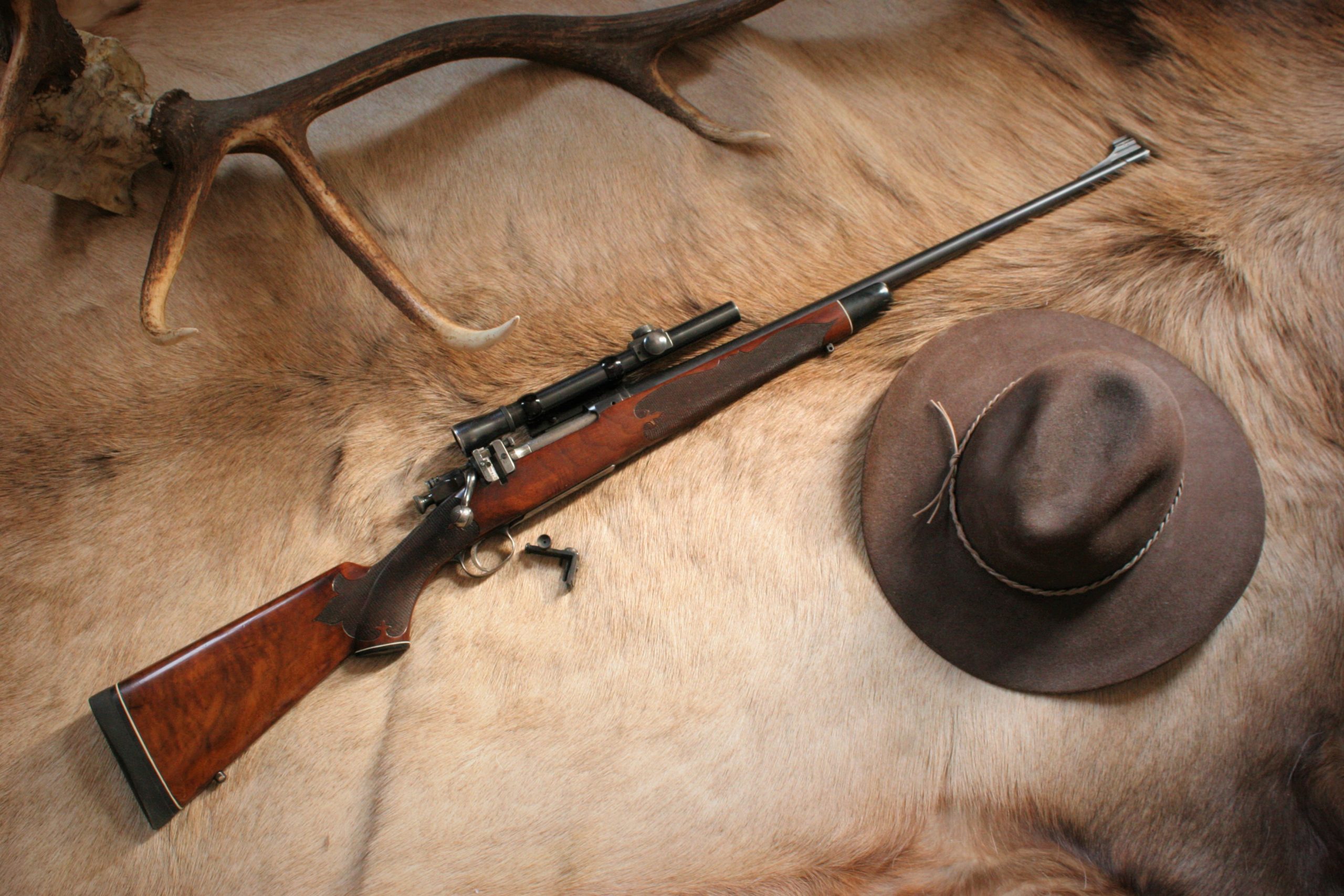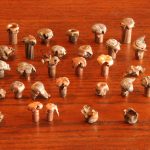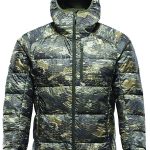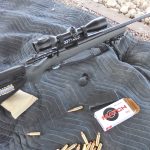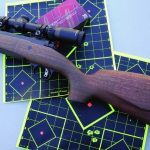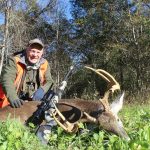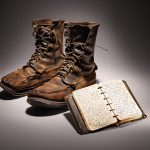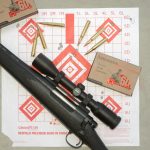A nostalgic look at America’s classic bolt-action hunting rifle.
Photo above: Barsness’s Springfield Sporter was built by Frank Pachmayr in the 1930s. Originally a .35 Whelen, it was later rechambered to .358 Norma Magnum.
At the beginning of the twentieth century, the U.S. Army decided it needed a more modern bolt-action rifle. Since 1892, the Army had been using variations of the Krag-Jorgenson rifle, which was chambered for the .30 U.S round commonly known as the .30-40 Krag. Despite America winning the 1898 Spanish-American War in Cuba, it did not go unnoticed that the 1895 Mauser rifles used by Spain could be reloaded far quicker than Krags, which had a rather clumsy, hinge-topped magazine on the side of the action. The 1895s used disposable “stripper-clips” that could be inserted quickly into the top of the action, instantly loading five rounds.
The Army designed a new action, which used stripper clips so similar to the Mauser’s that the U.S. Government had to pay royalties to the Mauser company. The action itself was a combination of Mauser and Krag features, and in 1903 was accepted as the new service rifle.
The U.S. also “designed” a new cartridge for the 1903 rifle, strongly resembling the first smokeless German military round, today known in the U.S. as the 8×57 Mauser. The 8×57 had a rimless case, formed by cutting an extractor groove around the case-head, resulting in a rim the same diameter as the cartridge body.
The 1903 Springfield’s cartridge was also rimless, and in another not-so-astonishing coincidence, featured the same 12mm (.472 inch) rim diameter as the 8×57. The overall case was slightly longer, and used the same 220-grain roundnose bullet as the .30-40 Krag, at a muzzle velocity of 2,300 fps.
Soon afterward, however, Germany dropped the 8×57’s heavy round-nose bullet, switching to a 154-grain spitzer (pointed) bullet at a muzzle velocity around 2,800 fps. The faster, sleeker bullet extended the 8×57’s range considerably, and the U.S. again followed the German lead by switching to a 150-grain spitzer at 2,700 fps. Officially termed the “cartridge, ball, caliber .30, Model of 1906,” it soon became known as the .30-06.
Hunters started using the new rifle and round, which resulted in a major secondary industry, converting 1903 Springfield military rifles into sporters. The first and most famous 1903 was ordered from Springfield Armory by President Theodore Roosevelt in 1904. The Armory fitted a custom-made sporter stock, partly fashioned after one of Roosevelt’s Winchester rifles, with a short fore-end, cheekpiece, and commercial buttplate, and replaced the military open sights with Lyman sporting sights.
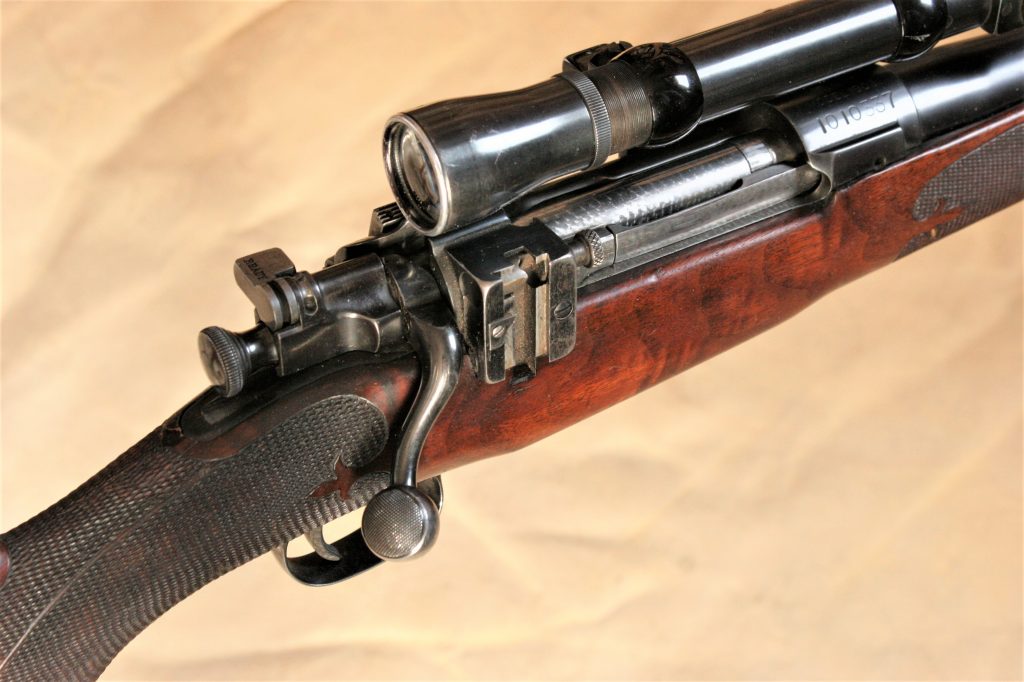
Even for America’s commander-in-chief, this work wasn’t free. Roosevelt paid $42.13 for the job, equivalent to around $1,200 today, and in 1905 he took a Colorado black bear with the rifle, using the military 220-grain load. It was also one of three rifles he took on his long, post-presidential East African safari in 1909-10, along with an 1895 Winchester lever-action in .405 WCF and a Holland & Holland .500/.450 double. He used the newer 150-grain spitzer .30-06 ammo; the pointed bullet tended to tumble when hitting game, killing quickly.
Roosevelt’s book about the safari, African Game Trails, alerted plenty of hunters to the 1903 Springfield’s potential, including Roosevelt’s friend, the well-known author Stewart Edward White, who in 1910 commissioned gunsmith Louis Wundhammer to build five Springfield sporters—one for him, and four for friends.
Wundhammer was born in Bavaria but by 1910 lived in Los Angeles, a hotbed of custom sporting rifles during much of the twentieth century. White’s rifle was apparently the first commercially made Springfield sporter, and of course he also published a book about his 1912 safari.
From then on a 1903 Springfield sporter became the rifle for cutting-edge American sportsmen. The list of well-known Springfield fans includes Ernest Hemingway (who ordered his from Griffin & Howe), and Army officer and author Townsend Whelen, who owned several Springfield sporters made by various gunsmiths.
Eventually even Springfield Armory produced a sporting version, which could be purchased by members of the National Rifle Association. Several thousand were sold from 1924 to 1933. They resembled a plainer version of Roosevelt’s rifle, but had a Lyman receiver sight, the Model 48, developed specifically for the 1903 rifle.
Custom 1903 Springfields attracted such lofty customers partly because most American “authorities” (including Whelen) considered the 1903 a better action than the 1898 Mauser used by many gunsmiths and European firearms companies—not necessarily mechanically, but in manufacturing quality. Military 98 Mausers were made all over the world in vast numbers, sometimes by factories not so concerned about fit and finish, and even some gunsmiths in Germany made Springfield sporters.
I started slowly falling under the spell of the Springfield after beginning to hunt big game in the 1960s, when the Civilian Marksmanship Program sold a bunch of “war surplus” 1903 Springfields to retail companies. Many local hunters bought surplus Springfields, some using the rifles as-is, especially the less expensive 1903A3 version produced by Remington and the L.C. Smith & Corona Typewriter Company during World War II, which had an aperture sight better for field use than the open sights of the original 1903.
The 1960s were the last gasp of converting original 1903 Springfields to sporting rifles; by the 1970s, original military rifles started becoming too valuable to convert. I bought my first Springfield sporter in the 1970s, a typical 1960s “garage” job converted for scope use, with a semi-inletted walnut stock and a Canjar custom trigger. I spiffed up the stock a little, and hunted with the rifle for several years.
A quarter-century later I started lusting after one of the classic custom Springfields made before World War II, in large part due my friend Tim Crawford giving me a brand-new book in 2005, Custom Gunmakers of the 20th Century, written by Michael Petrov, a rifle loony from Anchorage, Alaska. Petrov had published a series of articles about custom Springfields for the now-defunct Precision Shooter magazine, which they eventually collected in book form.
Reading Petrov taught me a lot more about Springfield sporters, and a year later I ran across The One, on the late Ike Ellis’s table at a local gun show. Ike was a fine custom stockmaker who owned a big sporting goods store in Idaho Falls, so he knew his stuff. This particular Springfield had a classic, highly-figured black walnut stock, finely and extensively checkered in a fleur-de-lis pattern, with the requisite Lyman 48 receiver sight and Lyman Alaskan scope in a detachable Griffin & Howe side-mount.
But it also had white-line spacers between the ebony fore-end tip and grip cap, and a ventilated Pachmayr white-line recoil pad. This seemed odd for a custom rifle typical of the pre-World War II era—until I picked it up and saw “Frank Pachmayr” engraved on the barrel.
Frank and his father, Gus, were among the very top custom gunsmiths of the pre-World War II era. Like Wundhammer, they were based in Los Angeles, so had plenty of great stock wood from California walnut groves. Frank came up with the concept of white-line spacers before the war, even making some from elephant ivory.
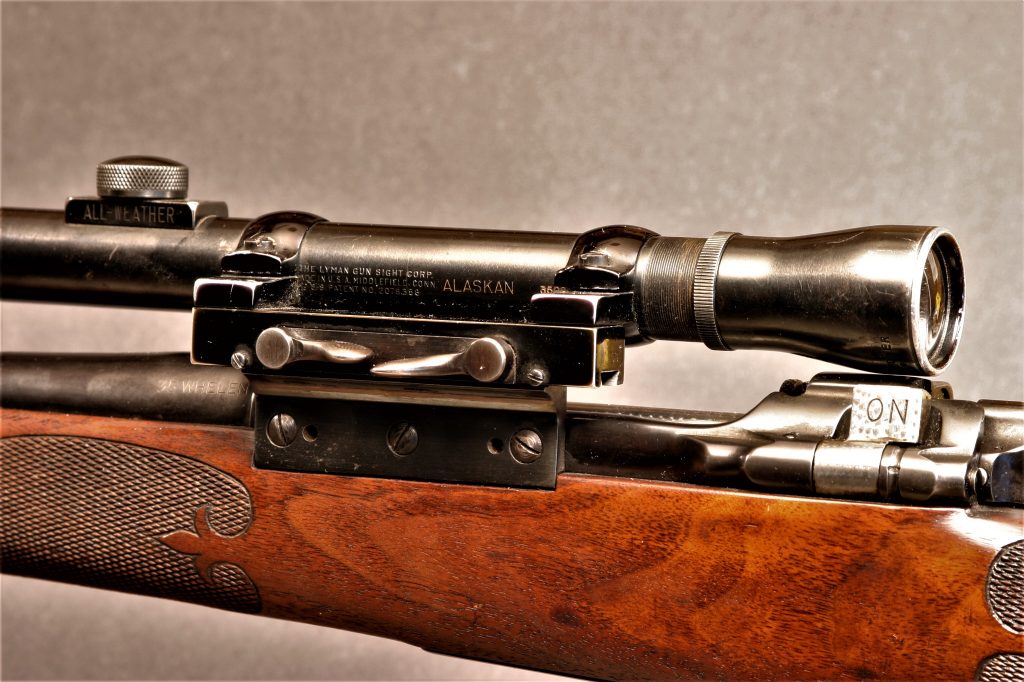
The barrel was engraved “.35 Whelen,” but the tag read “.358 Norma Magnum,” one of the many .30-06-length belted magnums that appeared in the two decades after the war. No doubt the rifle got converted then, when the Whelen was still a wildcat and the Norma a new factory round. The rifle seemed like such a perfect illustration of Springfield sporter history that of course, I succumbed.
Eileen and I ended up in Alaska a couple years later, on our way to open ptarmigan season with our outfitter friends Phil Shoemaker, his wife, Rocky Harrison, and their kids Tia and Taj. Of course Phil knew Mike Petrov, and told him we’d be overnighting at an Anchorage motel. Mike invited us to dinner, and we had a great evening with him and his wife, Janet, much of it among his collection of fine rifles. Mike and I kept in touch, and in 2013 he sent me a copy of Volume Two of Custom Gunmakers of the 20th Century, an even more impressive collection of new and updated information.
Unfortunately, Mike passed away a year later, but through the books his knowledge of Springfield sporters lives on—though they now sell for far more than the original $16.95. For hunters who’d like to learn almost everything about classic Springfield sporters, they’re worth the price.

